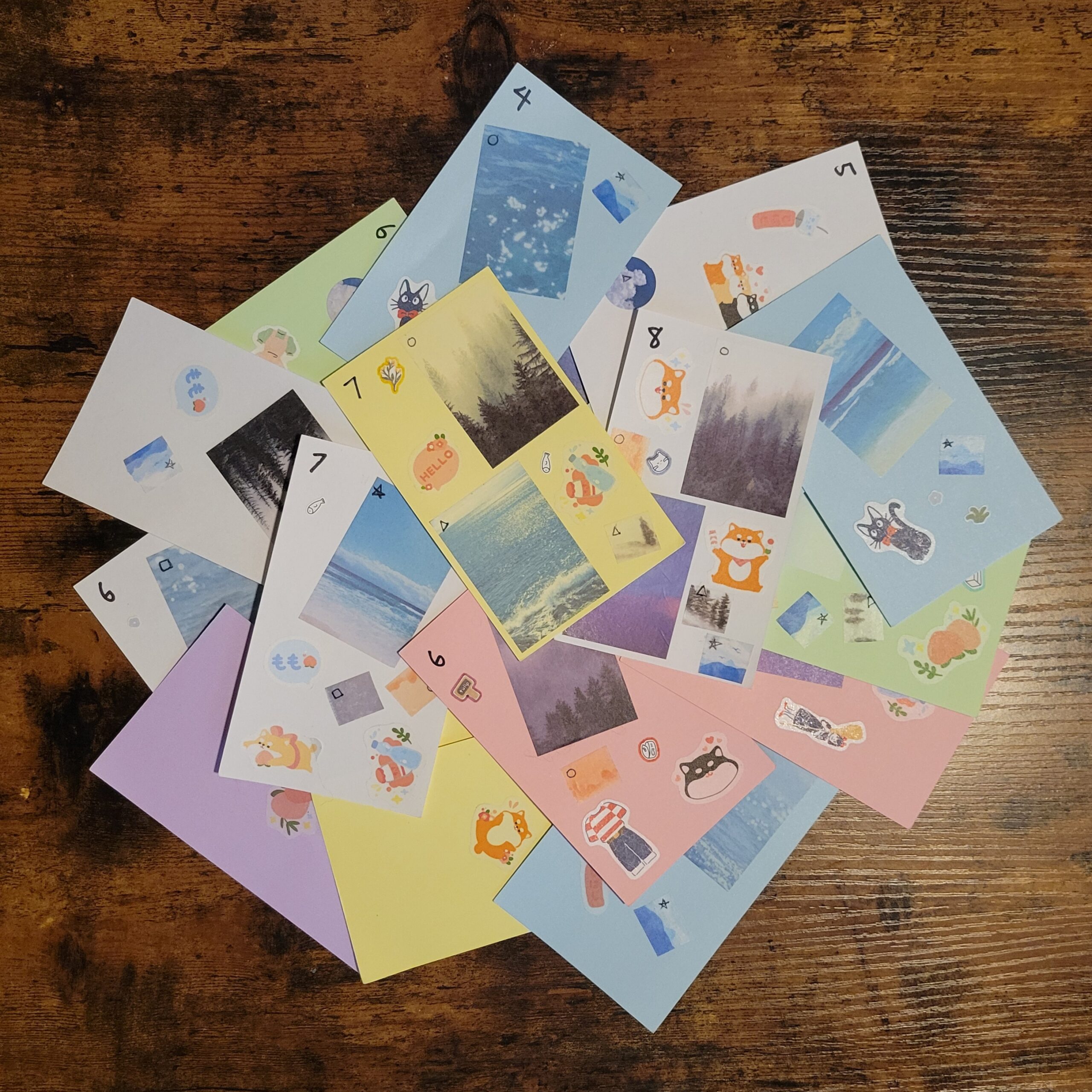Emily Ghang & Erin Matthews
First Meeting: Brainstorming & Creating Rules
During our initial meeting, our primary focus was on brainstorming ideas for the game we wanted to create. Our first decision was to design a card game with the objective of getting rid of all your cards. The concept for our game originated from considering the materials at our disposal. We had to choose what our cards would be, and whether we would create them from scratch or use a standard deck. One group member had stickers and notecards, so we decided to utilize these. From there, we agreed that a matching game would be a suitable direction. We explored various themes but ultimately chose to use the stickers we had on hand.
The next step involved devising rules and mechanics for our cards. A significant portion of our game’s rules and mechanics were brainstormed during this initial meeting, although they continued to evolve as we developed the game further. The mechanics we finalized included creating a matching game using stickers on cards. While we weren’t clear initially on the specifics, we knew we wanted to incorporate these elements. Basic rules were established, such as playing one card from your hand per turn, the total number of cards, and parts of their design. We brainstormed many additional mechanics that we ultimately did not use, such as using lined and unlined index cards with different effects, swapping hands with other players, incorporating special stickers with varying effects, and the option to match numbers on cards.
Second Meeting: Creating Cards & Playtesting the Game
Our second meeting was focused on creating cards and playtesting the game. Before crafting the cards, we decided to make a total of 49, using index cards in six different colors. We opted for eight cards of each color, numbered one to eight, to indicate the number of stickers per card. For instance, a card marked with the number one would have one sticker. Additionally, we created a unique white index card with nine stickers and no number to serve as the game’s starting card.
After assembling the cards, we playtested the game. The initial two-player test was brief, lasting about five minutes, as each player started with seven cards. To increase the game’s duration and complexity, we decided to give ten cards to each player at the start. This adjustment resulted in the second playtest lasting around 15 minutes. We observed that the game involved an element of luck, especially when players couldn’t match cards with a single sticker. We felt this added sufficient balance to the game.
Based on our two-player playtests, we introduced new rules and revised existing ones. We coined the term “ultimate match” for when all stickers on a player’s card matched the last played card, or vice versa. We also added a “color match” rule: if the card’s color matches the last played card’s color, other players must draw one card from the deck. We considered further rules, such as distributing all played cards among players upon an ultimate match, which we thought might suit games with more than two players, but ultimately decided not to incorporate. Another option was allowing an extra card play for a perfect match, while other players draw two, which is what we decided on in the end.
After playtesting with four players, we concluded that this was the maximum feasible group size, given the number of cards. We named our game “Ultimate Match,” inspired by the key game mechanic. In a four-player game, an ultimate match allows the player to play one card, while others draw one (instead of the normal two), to prevent rapid depletion of the deck. Additionally, we decided to modify some cards by adding colored borders or symbols to stickers in order to ensure there was no confusion about which stickers were a match. If players are uncertain about a match, they can refer to the colored border or symbol on the largest stickers; if these match, the cards are considered a match. Because some of the stickers are not exactly identical to their matches, we thought this was a necessary modification to ensure the game flowed smoothly.
After Playtesting in Class:
Because we playtested our game so extensively before class, we didn’t recieve comments about the rules or structure of our games in class. We did not alter any of the rules from what they were in class during playtesting. However, we had already gone through about five or six variations of the rules before reaching the set of rules we settled on. The most common feedback we had was that some of the stickers were difficult to identify as a match. To remedy this, we changed the stickers that were most commonly confused with plain colored rectangles in order to make sure there was no more confusion. We had also previously drawn symbol on some stickers to make it clear that they were matches. After class we altered a few of those symbols that were also causing confusion.
